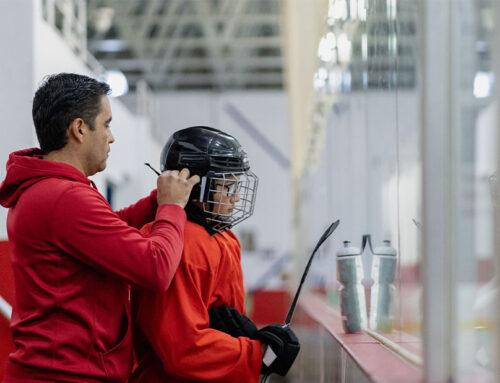![]()
One of the rockiest relationships in sports, and one of the most important, is the relationship between pitchers and catchers. Big egos and strong opinions can easily get in the way. To work together in harmony to get the job done, these players usually need to go through some growing pains to build a working relationship.
On day one of spring training, it’s up to the pitchers to start throwing. But it’s up to the catchers to start a relationship that will be able to withstand adversity, tension and fights, so the team will be able to compete at a high level throughout the entire season.
How a Catcher Must Lead
A catcher must act as a leader, while remaining sensitive to the needs of the pitcher. A catcher earns trust through listening to the pitchers, and then leading the entire team. It is the catcher’s responsbility to build, maintain, mend and nurture the relationship with each pitcher. It’s no accident that Bruce Bochy and Mike Matheny, two of the most successful MLB managers in the past few years, were catchers.
How do you accomplish this? You work with your pitcher to develop a gameplan. Understand the pitcher’s strengths and weaknesses, and work with him to develop mutually agreed upon strategies for different game situations. There should rarely be a moment when the two of you are not on the same page. If you provide a sign, the pitcher should know why you are suggesting that pitch.
It all comes down to communication. If possible, review each inning with your pitcher to determine what’s working and what’s not. Be sensitive to how the pitcher is feeling and adjust your gameplan accordingly.
Another important factor is research. If you have the resources, you should know the weaknesses of opposing batters. When you have this knowledge, your pitcher will have more confidence in your decision-making abilities.
How a Pitcher Must Lead
Pitchers typically don’t care about arm strength or hitting ability; they care about getting opposing hitters out, and feeling comfortable on the mound. Greg Maddux used a variety of catchers while pitching for the Atlanta Braves. Charlie O’Brien, Eddie Perez, Paul Bako and Henry Blanco were Maddux’s personal catchers, even though the All-Star Javy Lopez was Braves’ primary catcher.
The close relationship was developed because the pitchers were most comfortable with the catcher. They trusted the catcher and could focus on their routine on the mound without having to worry about what’s going on behind the plate.
Again, it all comes down to communication. It’s the pitcher’s job to explain his tendencies, preferences and strengths when on the mound. If he doesn’t feel like something is working well, he must tell the catcher.
Pitchers need to check their ego at the dugout door. The catcher may select a pitch the pitcher doesn’t necessarily agree with, because he may see or know something the pitcher isn’t aware of. If shaking off signs becomes commonplace, the catcher should talk to the pitcher to learn what he’s feeling before frustrations get out of control.
[cf]skyword_tracking_tag[/cf]RECOMMENDED FOR YOU
MOST POPULAR
![]()
One of the rockiest relationships in sports, and one of the most important, is the relationship between pitchers and catchers. Big egos and strong opinions can easily get in the way. To work together in harmony to get the job done, these players usually need to go through some growing pains to build a working relationship.
On day one of spring training, it’s up to the pitchers to start throwing. But it’s up to the catchers to start a relationship that will be able to withstand adversity, tension and fights, so the team will be able to compete at a high level throughout the entire season.
How a Catcher Must Lead
A catcher must act as a leader, while remaining sensitive to the needs of the pitcher. A catcher earns trust through listening to the pitchers, and then leading the entire team. It is the catcher’s responsbility to build, maintain, mend and nurture the relationship with each pitcher. It’s no accident that Bruce Bochy and Mike Matheny, two of the most successful MLB managers in the past few years, were catchers.
How do you accomplish this? You work with your pitcher to develop a gameplan. Understand the pitcher’s strengths and weaknesses, and work with him to develop mutually agreed upon strategies for different game situations. There should rarely be a moment when the two of you are not on the same page. If you provide a sign, the pitcher should know why you are suggesting that pitch.
It all comes down to communication. If possible, review each inning with your pitcher to determine what’s working and what’s not. Be sensitive to how the pitcher is feeling and adjust your gameplan accordingly.
Another important factor is research. If you have the resources, you should know the weaknesses of opposing batters. When you have this knowledge, your pitcher will have more confidence in your decision-making abilities.
How a Pitcher Must Lead
Pitchers typically don’t care about arm strength or hitting ability; they care about getting opposing hitters out, and feeling comfortable on the mound. Greg Maddux used a variety of catchers while pitching for the Atlanta Braves. Charlie O’Brien, Eddie Perez, Paul Bako and Henry Blanco were Maddux’s personal catchers, even though the All-Star Javy Lopez was Braves’ primary catcher.
The close relationship was developed because the pitchers were most comfortable with the catcher. They trusted the catcher and could focus on their routine on the mound without having to worry about what’s going on behind the plate.
Again, it all comes down to communication. It’s the pitcher’s job to explain his tendencies, preferences and strengths when on the mound. If he doesn’t feel like something is working well, he must tell the catcher.
Pitchers need to check their ego at the dugout door. The catcher may select a pitch the pitcher doesn’t necessarily agree with, because he may see or know something the pitcher isn’t aware of. If shaking off signs becomes commonplace, the catcher should talk to the pitcher to learn what he’s feeling before frustrations get out of control.










